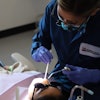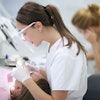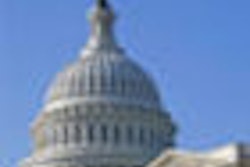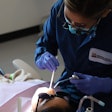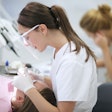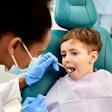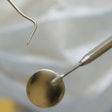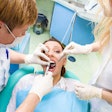
It looks like Minnesota could be getting midlevel providers after all.
Dental professionals and legislators in the Gopher State this week reached a compromise in their debate over the creation of a dental therapist program that would help improve access to oral care for underserved populations across the state.
“This was a very emotional issue on
many levels.”
— Sen. Ann Lynch
If passed, the new legislation would make Minnesota the first state in the U.S. to license dental therapists. The Legislature is expected to make its final vote on the bill this week, according to Sen. Ann Lynch (D-Rochester), who proposed the original bill. If approved, it could be on Gov. Tim Pawlenty's desk as soon as tomorrow (May 14).
"This is really an exciting piece of legislation, not just for Minnesota but for the whole country," Sen. Lynch said in an interview with DrBicuspid.com. "This was a very emotional issue on many levels, but I am a firm believer that, at the end of the run, the evidence will prevail for policymakers."
In its original form, the bill -- which was actually a combination of two separate pieces of legislation, one introduced by Rep. Kim Norton (D-Olmstead) and the other by Rep. Cy Thao (D-Ramsey) -- proposed the creation of two types of midlevel providers: oral health practitioners (OHP) and dental therapists. The dental therapist would graduate from a dental therapy education program in a dental school or dental college, while the OHP would be required to have a bachelor's or master's degree from an oral health practitioner education program.
Under the original bill, the dental therapist would work under the direct supervision of a dentist and perform preventive, evaluative, and educational services, while the OHP would be allowed to work without a supervising dentist being onsite and would perform preventive, primary diagnostic, educational, palliative, therapeutic, and restorative services.
Dental concerns
While some in the dental community were concerned that the educational requirements were not stringent enough, most opposed provisions in the bill that would have allowed the OHPs to fill or pull permanent teeth without the onsite supervision of a licensed dentist.
The new "compromise" bill creates two categories of midlevel practitioners -- a dental therapist and an advanced dental therapist -- and changes the scope of practice and the educational requirements.
"We were able to change key elements of the legislation that still ensure patient safety," Jamie Sledd, D.D.S., immediate past president of the Minnesota Dental Association (MDA), told DrBicuspid.com. "What was important to us were the principles for appropriate education, supervision, and scope of practice."
Under the bill's new language, a dental therapist would be allowed to perform basic preventive and restorative procedures only with the onsite supervision of a dentist. With additional training, a dental therapist could become an advanced dental therapist, performing additional procedures with the permission of the supervising dentist but without the need for the dentist to be present. An advanced dental therapist could also assess a patient's condition, although a licensed dentist would have to authorize a treatment plan.
"Some procedures will require onsite supervision, such as surgical procedures, and they will have a collaborative management agreement with a dentist who will be doing the diagnosis and treatment planning for all patients the dental therapists provide care for," Dr. Sledd said. "The advanced dental therapists, with additional training, will be allowed to do surgery off site but only with prior approval of the dentist."
The educational requirements have also been modified, Sen. Lynch and Dr. Sledd noted. Through its dental school, the University of Minnesota will now offer a four-year dental therapist program that does not require the student to have any prior dental experience. The Minnesota State Colleges and Universities system, which comprises 32 state-supported technical colleges, community colleges, and state universities, will offer a two-year master's program to dental hygienists who already have a four-year degree. This same two-year program will also be offered by the University of Minnesota.
If the bill passes, the first courses would begin in the fall, Dr. Sledd noted.
Other key changes to the legislation include:
- Clarifying the parameters for extractions and the referral process.
- Clarifying protocols for patients whose treatment exceeds the scope of the therapist.
- Greater specificity regarding prescribing authority. Dental therapists will be allowed to provide, dispense, and administer medications but not write prescriptions.
"The Minnesota Dental Association and its member dentists have worked hard over the past few months to ensure that principles for appropriate education, supervision, and scope of practice were maintained ... [and] to create a position that will ensure patient safety and create an integrated member of the dental team," said Lee Jess, president of the MDA, in a press release.
Sen. Lynch hopes Minnesota's efforts to create a dental therapist program can serve as a model for other states.
"Some would suggest that there is a crisis in oral healthcare in this country," she said. "I don't pretend to suggest that this [legislation] will resolve all of those issues or that crisis, but I think it is a new tool that we've never had before. I feel we've done good work for Minnesota, but also that we've contributed to healthcare reform in this country."
Copyright © 2009 DrBicuspid.com

